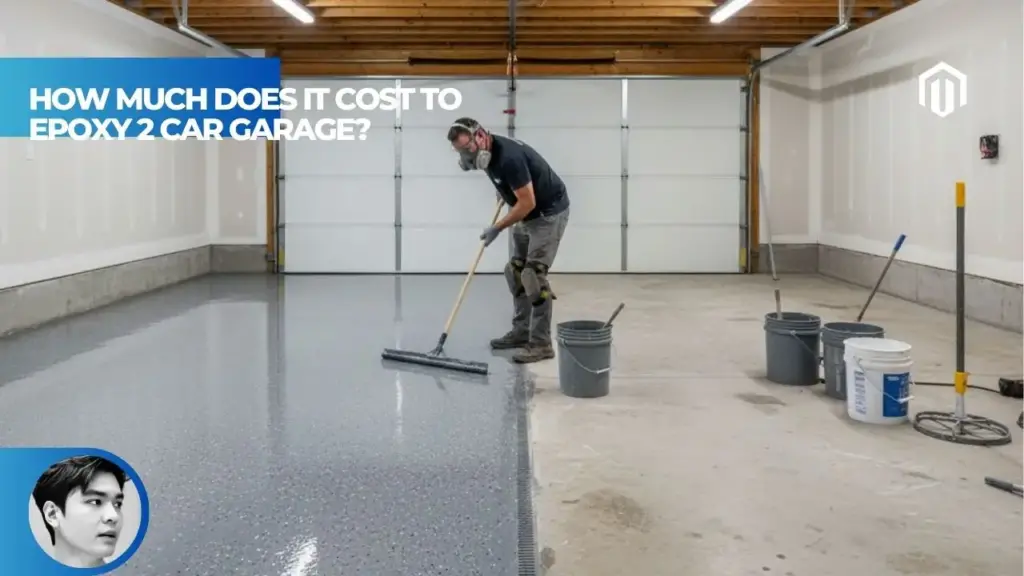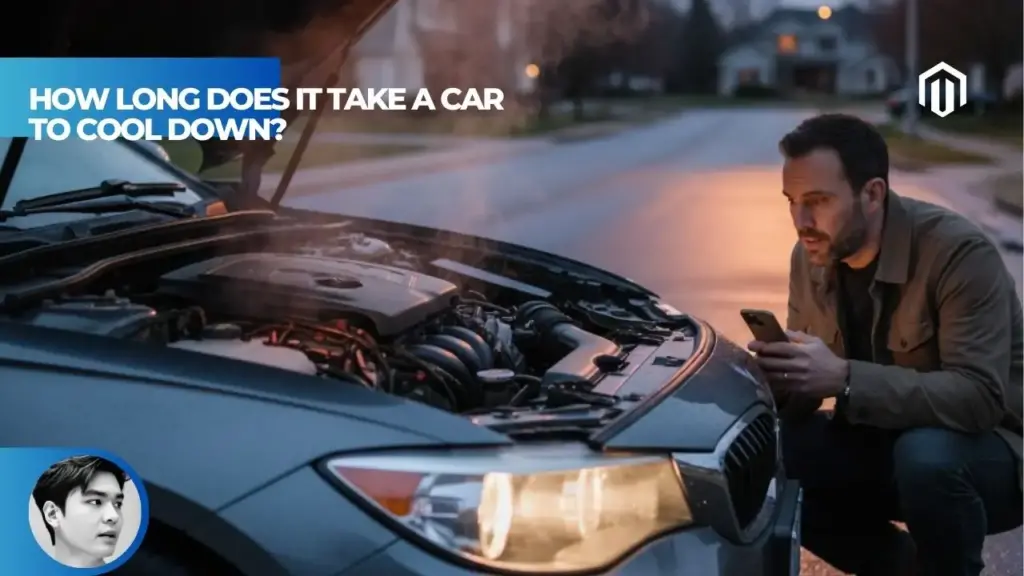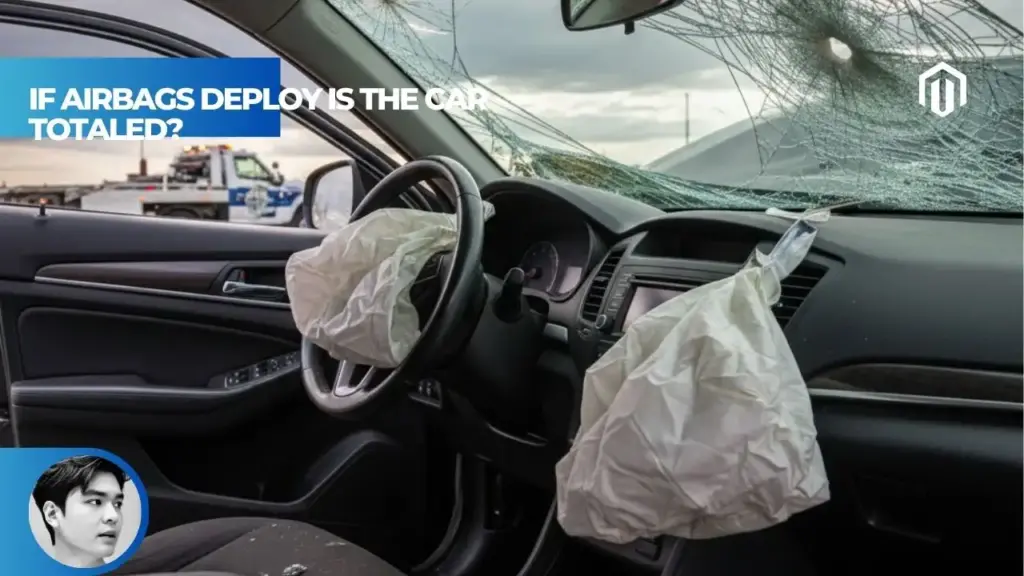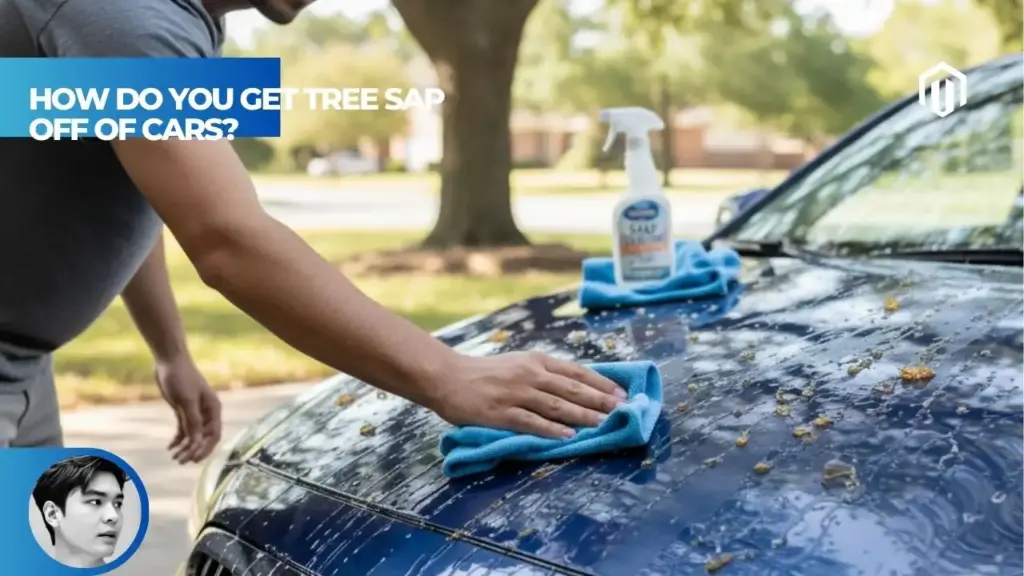You may also like:
- 【Explained】How Long Should a Car Battery Last Without Driving? The Definitive Guide
- 【Explained】Car Won’t Start in Cold But Battery is Good? (4 Causes)
- 【Explained】Can You Jump Start a Car in the Rain? (A Step-by-Step Guide)
- 【Explained】How Long Does It Take to Replace a Car Battery? (A Full Breakdown)
- 【Explained】Can You Jumpstart a Car With a Bad Alternator?
When your car won’t jump start but the lights come on, it indicates the battery has enough power for low-drain electronics but lacks sufficient cranking amps—typically 200-400 amps—needed to turn the starter motor[1]. This frustrating situation affects millions of drivers annually, with AAA reporting over 27 million emergency roadside calls in 2024, many for battery-related issues[2].
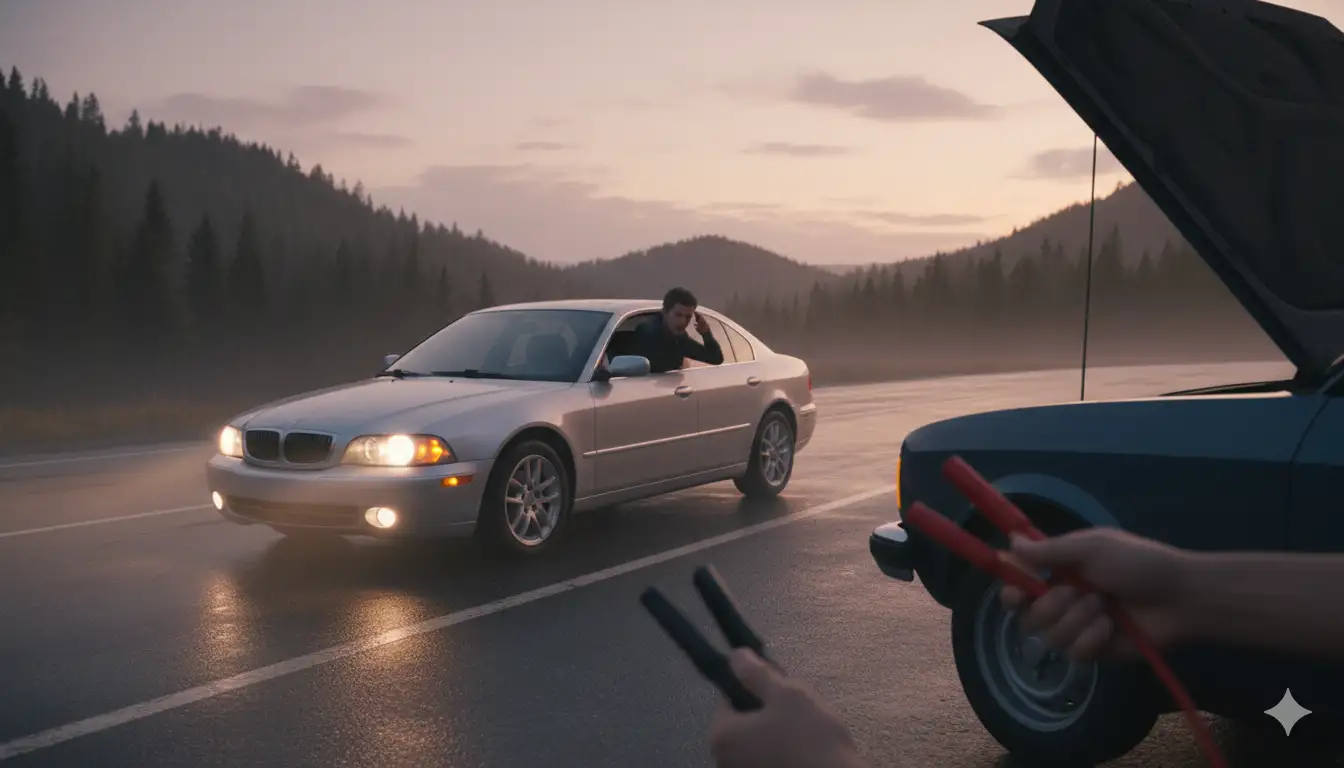
Understanding Why Your Car Won’t Jump Start But Lights Come On
You’re stranded with jumper cables attached, the dashboard illuminated like a Christmas tree, yet your engine refuses to turn over. This scenario confuses many drivers who assume if lights work, the battery must be fine. However, the electrical system in your vehicle operates on different power requirements for different components.
No Crank But Lights On: What This Diagnostic Signal Means
When you experience no crank but lights on, your vehicle’s electrical system is providing a critical diagnostic clue about the problem’s nature. Interior lights and dashboard displays require only 10-20 amps to function, while the starter motor demands 200-400 amps or more to crank the engine[1]. This massive difference in power requirements explains why your radio, lights, and even power windows might work perfectly while the engine won’t start.
The distinction between low-drain and high-drain electrical components becomes crucial for diagnosis. According to Autvex automotive experts, understanding these power differences helps drivers avoid costly misdiagnoses and unnecessary towing charges. A battery can retain enough residual charge for accessories while falling below the critical threshold for engine starting.
Modern vehicles contain sophisticated electrical systems that prioritize power distribution. When available power drops below optimal levels, the car’s computer maintains essential functions like lights and displays while being unable to engage high-demand systems like the starter motor.
Dashboard Lights On But No Engine Crank Explained
Dashboard lights functioning without engine cranking represents one of the most common electrical puzzles drivers face. The phenomenon occurs because your vehicle’s electrical architecture separates low-power control circuits from high-power starting circuits[3]. This separation ensures critical safety systems remain operational even when starting power is compromised.
| System Component | Power Required | Function Status When Battery Weak |
|---|---|---|
| Dashboard Lights | 5-10 amps | Usually Works |
| Radio/Infotainment | 10-15 amps | Often Works |
| Power Windows | 20-30 amps | May Work Slowly |
| Headlights | 15-20 amps each | Dim but Functional |
| Starter Motor | 200-400+ amps | Won’t Engage |
The clicking sound often accompanying this condition provides additional diagnostic information. A single loud click suggests the starter solenoid engages but lacks power to turn the motor, while rapid clicking indicates the battery has minimal charge, causing the solenoid to repeatedly engage and disengage[4].
Top 5 Reasons Your Car Won’t Jump Start Despite Having Power
Understanding these five primary causes helps narrow down the problem quickly, potentially saving hundreds of dollars in unnecessary repairs and towing fees.
Reason 1: Weak Battery or Bad Battery Cell Issues
Battery problems account for the majority of jump-start failures, even when lights remain functional. Modern batteries consist of six cells producing 2.1 volts each, totaling the standard 12.6 volts when fully charged[5].
Dead Car Battery Despite Lights Working
A seemingly paradoxical situation occurs when your battery appears dead for starting purposes yet powers accessories normally. This happens because batteries deteriorate gradually, losing cranking capacity before complete failure. Cold Cranking Amps (CCA)—the battery’s ability to deliver high current at 0°F—degrades over time while resting voltage remains relatively stable.
Testing reveals the truth: a battery showing 12.4 volts at rest might seem healthy, but if it drops below 10 volts under load, it cannot start your engine. Professional testing equipment at [automotive service centers] can perform load tests that simulate starting conditions, revealing hidden weaknesses standard multimeters miss.
Temperature significantly impacts battery performance. For every 10°F drop below 80°F, battery capacity decreases by approximately 10%[5]. This explains why battery failures spike during winter months when engines require more power to overcome thickened oil while batteries provide less output.
Low Battery Voltage and Cranking Amps
Understanding the relationship between voltage and cranking amps proves essential for proper diagnosis. While 12.6 volts indicates a fully charged battery at rest, the critical measurement occurs during cranking when voltage shouldn’t drop below 9.6 volts[1].
Key battery specifications to understand:
- CCA (Cold Cranking Amps): Power available at 0°F for 30 seconds
- CA (Cranking Amps): Power available at 32°F for 30 seconds
- Reserve Capacity: Minutes battery can deliver 25 amps before dropping below 10.5 volts
- Amp-Hours: Total energy storage capacity
Most passenger vehicles require 400-600 CCA for reliable starting, though larger engines and diesel vehicles may need 700-1000 CCA[1]. When batteries age, internal resistance increases, reducing available cranking amps even if resting voltage appears normal.
Old Battery Won’t Hold Charge Problems
Batteries typically last 3-5 years under normal conditions, though extreme climates can shorten lifespan to 2-3 years[6]. As batteries age, sulfation builds up on internal plates, reducing their ability to accept and hold charge effectively.
Signs of an aging battery include slow engine cranking, dim headlights during idle, and the need for frequent jump starts. The average battery replacement cost in 2025 ranges from $100-$300 for standard vehicles, with luxury models like BMW or Audi requiring specialized AGM batteries costing $200-$400[6].

Reason 2: Faulty Starter Motor and Related Components
Starter system failures represent the second most common cause when jump-starting fails despite adequate battery power. The starter motor must spin at 200-300 RPM to crank most engines successfully[4].
Clicking Sound When Turning Key Diagnosis
The clicking noise when attempting to start provides valuable diagnostic information about starter system health. A single, loud click typically indicates the starter solenoid engages but the motor won’t turn, suggesting either insufficient power delivery or mechanical starter failure[4].
Rapid clicking sounds point to a different issue—the solenoid repeatedly engaging and disengaging due to voltage drop when attempting to activate the starter motor. This pattern often indicates battery weakness rather than starter failure, though corroded connections can produce similar symptoms.
Testing the starter requires checking voltage drop across connections while cranking. More than 0.5 volts drop at any connection indicates excessive resistance requiring cleaning or repair[3]. Professional mechanics use amp clamps to measure actual current draw, with healthy starters typically pulling 100-200 amps during cranking.
Starter Solenoid Failure Signs
The starter solenoid acts as a high-current relay, connecting battery power to the starter motor when you turn the key. Solenoid failure manifests through specific symptoms that differentiate it from other starting problems[4].
Common solenoid failure indicators:
- No clicking sound when key turned despite good battery
- Starter engages intermittently
- Starter continues running after engine starts
- Visible burning or melting on solenoid contacts
- Tested good battery and connections but no start
According to Autvex diagnostics data, solenoid replacement costs range from $50-$200 for parts, with labor adding $75-$150 depending on accessibility. Some vehicles integrate the solenoid with the starter, requiring complete assembly replacement at $300-$600[6].
Bad Starter Relay Symptoms
The starter relay, a smaller component than the solenoid, controls power flow to the solenoid itself. Located typically in the fuse box, this $20-$50 part can prevent starting when faulty despite seeming insignificant[7].
Relay failure symptoms mirror solenoid issues but with subtle differences. A bad relay often produces no sound whatsoever when turning the key, as power never reaches the solenoid. Intermittent starting problems that resolve after multiple key turns frequently indicate relay contact deterioration.
Starter Motor Wiring Issues
Wiring problems between the battery, starter, and ground connections cause approximately 15% of no-start conditions[3]. These issues prove particularly frustrating as they can appear and disappear based on temperature, vibration, or component movement.
Heat damage from exhaust proximity commonly affects starter wiring, causing insulation breakdown and intermittent shorts. Ground connections, often overlooked during diagnosis, must provide less than 0.2 ohms resistance for proper starter operation[3]. Corroded or loose ground straps between engine and chassis frequently cause mysterious starting problems.
Reason 3: Battery Terminal and Cable Problems
Connection issues account for nearly 25% of jump-start failures, yet they’re often the simplest and cheapest to fix[8].
Corroded Battery Terminals Impact
Battery terminal corrosion creates resistance that prevents adequate current flow to the starter, even during jump-start attempts. The white, blue, or green buildup commonly seen on terminals isn’t just unsightly—it’s an insulator that can add several ohms of resistance to your starting circuit[8].
Corrosion forms through normal battery operation as acid vapor escapes and reacts with terminal metals. This process accelerates in hot climates or with overcharging conditions. Just 0.1 ohms of added resistance at battery terminals can reduce available starting current by 40-50 amps[3].
Cleaning corroded terminals requires disconnecting cables (negative first), using a mixture of baking soda and water to neutralize acid, then wire-brushing terminals until shiny. Applying dielectric grease or terminal protectant spray after cleaning prevents future corrosion buildup.
Loose Battery Cables and Poor Connections
Loose connections create intermittent contact that might allow enough current for lights but fail under starter motor loads. This problem often develops gradually as vibration loosens connections over time[8].
| Connection Point | Maximum Acceptable Resistance | Common Problems |
|---|---|---|
| Battery Post to Terminal | 0.01 ohms | Corrosion, looseness |
| Terminal to Cable | 0.01 ohms | Broken strands, crimping failure |
| Ground Cable to Chassis | 0.02 ohms | Rust, paint interference |
| Positive to Starter | 0.05 ohms | Heat damage, corrosion |
Professional mechanics check connections using a voltage drop test during cranking. Any connection showing more than 0.2 volts drop requires attention[3]. The importance of proper maintenance becomes evident when simple connection cleaning resolves mysterious starting problems.
Reason 4: Electrical System Faults Beyond the Battery
Modern vehicles contain complex electrical systems where failures in unexpected components can prevent starting even with a good battery and proper jump-start technique.
Faulty Ignition Switch Problems
The ignition switch controls multiple circuits beyond just starting, and partial failure can create confusing symptoms. When the switch fails to complete the start circuit while maintaining accessory power, lights work but starting becomes impossible[9].
Ignition switch problems often develop gradually, beginning with intermittent starting issues that worsen over time. Key warning signs include having to jiggle the key for starting, accessories cutting out while driving, or the engine dying when hitting bumps. NHTSA data shows ignition switch failures cause approximately 2-3% of no-start conditions[9].
Replacement costs vary significantly by vehicle, ranging from $150-$500 including parts and labor. Some vehicles require steering column disassembly, increasing labor time and cost substantially.
Bad Alternator Effects on Jump Starting
While alternators don’t directly prevent starting, a completely failed alternator can drain a good battery so thoroughly that jump-starting becomes ineffective. The donor vehicle’s charging system cannot overcome the dead vehicle’s electrical demands if its alternator provides zero output[10].
During jump-start attempts with a bad alternator, the dead battery acts like a massive resistor, absorbing all available power from the donor vehicle. This explains why some jump attempts fail even with proper connections and adequate time. Testing alternator output requires checking charging voltage, which should read 13.5-14.5 volts with engine running[10].
Blown Fuses for Starter Circuit
Modern vehicles use multiple fuses and fusible links protecting the starting circuit. A blown starter fuse prevents any power reaching the starter system regardless of battery condition[7].
Critical fuses to check:
- Main starter relay fuse (typically 30-40 amps)
- Ignition switch fuse (usually 10-20 amps)
- ECM/PCM power fuses
- Anti-theft system fuses
Fuse failures often result from previous starting attempts with a weak battery, causing excessive current draw that exceeds fuse ratings. Always check fuses with a test light or multimeter rather than visual inspection alone, as hairline cracks can be invisible.
Anti-theft System Immobilizer Issues
Factory anti-theft immobilizers prevent engine starting when they don’t recognize the key’s electronic signature. These systems can malfunction, creating no-start conditions even with perfect mechanical and electrical components[9].
Immobilizer problems typically trigger a security light on the dashboard or cause unusual flashing patterns. Some systems require specific reset procedures, like leaving the key in the “on” position for exactly 10 minutes. The complexity of modern security systems in luxury vehicles makes professional diagnosis essential when immobilizer issues are suspected.
Reason 5: Jump-Starting Procedure Errors
Incorrect jump-starting technique causes more failures than most drivers realize. Even with good batteries and connections, procedural errors can prevent successful starting.
Improper Jump Start Procedure Mistakes
The correct jump-start sequence matters more than many drivers appreciate. Connecting cables in the wrong order or to incorrect points can prevent power transfer or even damage electrical components[11].
Proper jump-start sequence:
- Position vehicles close but not touching
- Turn off both engines and all accessories
- Connect positive to dead battery positive terminal
- Connect other positive to donor battery positive
- Connect negative to donor battery negative
- Connect final negative to unpainted metal ground on dead vehicle (not battery)
- Start donor vehicle and let idle 2-3 minutes
- Attempt starting dead vehicle for maximum 15 seconds
- If unsuccessful, wait 2 minutes before retrying
Common mistakes include reversing polarity, which can destroy electronics instantly, or connecting the final ground to the dead battery’s negative terminal, potentially causing sparks near battery gases.
Faulty Jumper Cables Problems
Not all jumper cables are created equal. Thin, low-quality cables cannot carry sufficient current for successful jump-starting, especially with larger engines[11].
Cable gauge determines current capacity: 4-gauge cables handle up to 400 amps, suitable for most vehicles, while 2-gauge cables manage 600+ amps for trucks and SUVs[11]. Cheap 8 or 10-gauge cables often fail with anything beyond small four-cylinder engines.
Length also matters—longer cables experience more voltage drop. Quality 20-foot cables should have no more than 0.5 volts drop at 200 amps[11]. Damaged insulation, corroded clamps, or broken internal strands render cables useless despite appearing functional.
Poor Connection with Jumper Cables
Even quality cables fail if connections aren’t solid. Clamps must bite through corrosion and make firm metal-to-metal contact for proper current flow[11].
Paint, grease, or oxidation on connection points creates resistance that prevents adequate power transfer. The final ground connection proves especially critical—connecting to painted or rusty surfaces reduces available starting current significantly. Clean, bare metal on the engine block or chassis provides the best ground point.
Not Enough Time Charging with Jump Cables
Severely depleted batteries require charging time before attempting to start. Connecting cables and immediately cranking often fails because the dead battery absorbs available power without reaching starting threshold[11].
Allowing 5-10 minutes of charging with the donor vehicle running at 1500-2000 RPM can make the difference between success and failure[8]. This charging period partially replenishes the dead battery, providing additional cranking power beyond what the cables alone can supply.
Diagnostic Steps When Car Not Starting But Radio Works
Systematic diagnosis saves time and prevents costly part replacement guessing games.
How to Tell If It’s Your Starter or Battery
Distinguishing between starter and battery problems requires specific tests that isolate each component’s performance[12].
Battery testing procedure:
- Check resting voltage (should be 12.4-12.6V)
- Perform load test or conductance test
- Check specific gravity if possible (flooded batteries)
- Inspect age and date code
Starter testing procedure:
- Test battery first to ensure adequate power
- Check voltage at starter during cranking
- Measure starter current draw
- Perform bench test if removed
A battery showing 12.6 volts resting but dropping below 9.6 volts during cranking indicates battery failure. If voltage remains above 10 volts but the starter doesn’t turn, suspect starter or connection problems[12].
Checking for Electrical Wiring Problems
Electrical diagnosis requires methodical checking of circuits from power source to ground. Using a multimeter or test light, trace power flow through the starting circuit[3].
Start at the battery positive, checking for voltage at each connection point with the key in start position. Any point showing significant voltage drop indicates a problem location. Don’t forget ground circuits—poor grounds cause as many problems as positive-side failures.
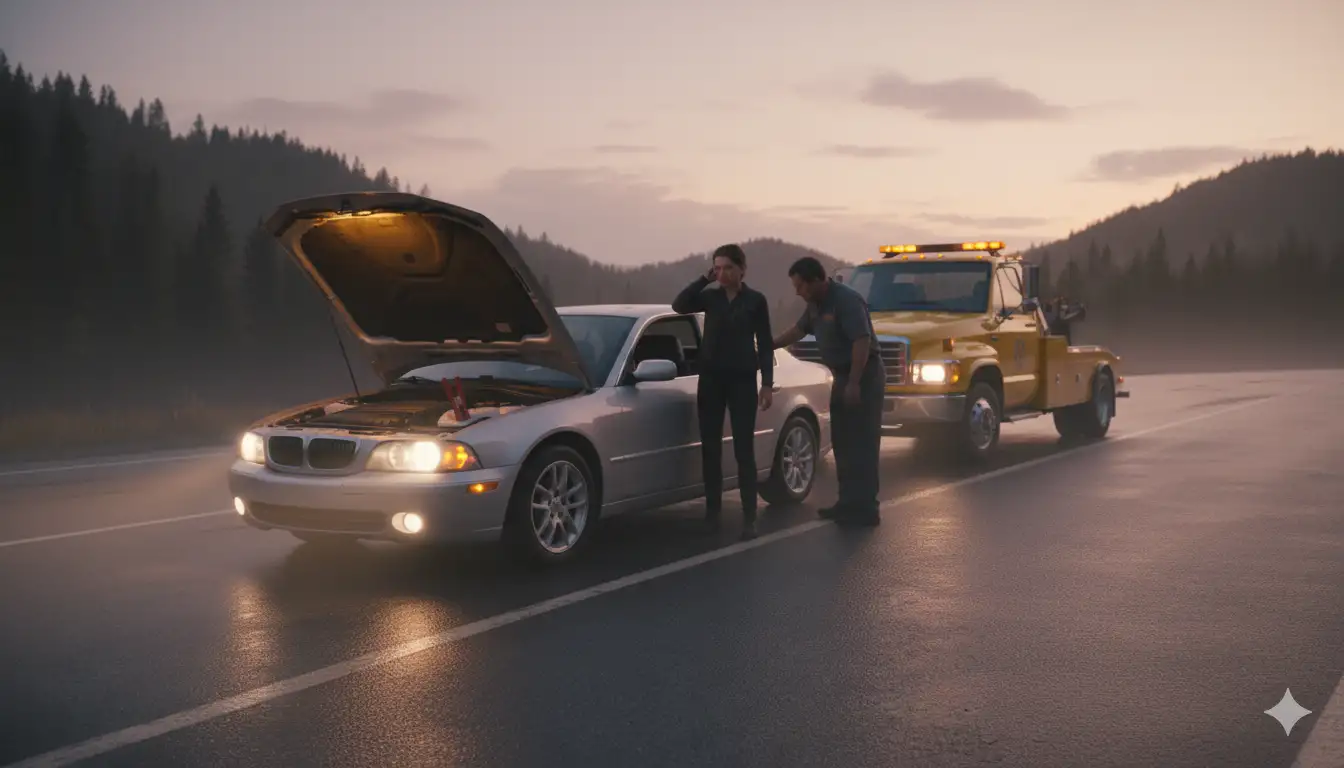
Key Takeaways
- Lights require 10-20 amps while starting needs 200-400 amps
- Battery weakness is the primary cause even when accessories work
- Single click indicates starter issues, rapid clicking suggests low battery
- Connection problems prevent 25% of successful jump starts
- Proper jump procedure and quality cables are essential for success
- Allow 5-10 minutes charging time for depleted batteries
- Professional diagnosis saves money by avoiding part guessing
Next Steps
When faced with a no-start condition despite working lights, follow this systematic approach:
Immediate actions:
- Clean and tighten all battery connections
- Check battery voltage with multimeter
- Inspect all fuses related to starting circuit
- Attempt jump-start with proper procedure and adequate charging time
If jump-starting fails:
- Test battery at auto parts store (usually free)
- Check starter relay by swapping with identical relay
- Listen for fuel pump priming when key turned on
- Verify security light isn’t indicating immobilizer activation
When to call for help:
- After 3 unsuccessful jump attempts
- If you smell burning or see smoke
- When you lack proper tools or expertise
- If vehicle is under warranty
Professional diagnosis typically costs $75-$150 but prevents expensive misdiagnosis. Modern vehicles’ complexity makes expert evaluation worthwhile when basic troubleshooting fails. Consider preventive maintenance schedules to avoid roadside breakdowns entirely.
Frequently Asked Questions
Why won’t my car jump start if the battery isn’t completely dead?
A battery can have enough power for lights (low-drain) but lack sufficient cranking amps for the starter motor. Weak cells, corrosion, or age reduce cranking capacity while maintaining minimal voltage for accessories that only need 10-20 amps versus the 200-400 amps required for starting[1].
What does a clicking sound mean when my car won’t start with a jump?
Clicking indicates the starter solenoid is engaging but the starter motor isn’t turning. This typically means insufficient power reaching the starter due to weak battery, poor connections, or a faulty starter motor itself requiring 100-200 amps to operate properly[4].
How can I tell if it’s my starter or my battery that’s the problem?
Test with a multimeter: 12.6V+ indicates good battery charge. If battery tests good but clicking persists during jump attempts, it’s likely the starter. Lights working suggests partial battery power. Load testing reveals true battery condition under starting demands[12].
Why would my car’s lights and radio work but the engine won’t turn over?
Lights and radio require minimal amperage (10-20 amps), while starting requires 200-400 amps. A weak battery can power accessories but lack the high current capacity needed for engine cranking, especially in cold weather when power demands increase[1].
Can an alternator cause a car to not start, even with a jump?
Yes, a completely failed alternator won’t charge the battery during jumping. The dead battery drains jump power immediately, preventing sufficient voltage from reaching the starter system. Alternators should produce 13.5-14.5 volts when running[10].
What if my battery terminals are clean but the car still won’t jump start?
Check cable connections at both ends, test starter relay/solenoid, verify ignition switch function, and inspect starter motor wiring. Internal battery failure is possible despite clean terminals. Use voltage drop testing to identify hidden resistance[3].
What are the signs of a faulty starter motor?
Single loud click when turning key, rapid clicking sounds, grinding/whirring noises, or complete silence despite good battery voltage all indicate starter motor problems. Starters typically draw 100-200 amps and require professional testing for accurate diagnosis[4].
Could a bad ignition switch cause my car not to start even when the battery has power?
Yes, a faulty ignition switch breaks the circuit between battery and starter. Accessories may work in “on” position, but the switch fails to send the start signal to the starter relay, preventing engine cranking despite adequate battery power[9].
References
- Chapel Hill Tire. (2023). Why Won’t My Car Jump-Start? Troubleshooting Guide. https://www.chapelhilltire.com
- AAA. (2025). AAA Urges Drivers to Stay Proactive on Auto Repair and Maintenance. https://newsroom.aaa.com
- Harris Tire Company. (2025). Car Won’t Jump Start? Here’s What Could Be Causing It. https://harristirecompany.com
- Firestone Complete Auto Care. (2019). Your Car Won’t Start & You Hear a Clicking Noise. https://www.firestonecompleteautocare.com
- XenonPro. (2024). Peak Amps vs Cranking Amps vs Cold Cranking Amps. https://www.xenonpro.com
- Tayniu. (2025). How Much Does It Cost to Replace Car Battery in 2025? https://tayniu.com
- Car-KU. (2025). Car Will Not Jump Start But Lights Come On: 5 Common Causes. https://www.car-ku.com
- RAC. (2025). My car won’t start, what should I do? https://www.rac.co.uk
- NHTSA. (2023). Electronic Systems Performance in Passenger Vehicles. https://www.nhtsa.gov
- Summit Racing. (2024). Battery Cranking Amps Guide. https://help.summitracing.com
- Neighborhood Roadside. (2025). 8 Reasons Why a Car Won’t Start with Jump. https://neighborhoodroadside.com
- Marshall Batteries. (2023). Stupid Simple Guide to Car Battery CCA Meaning. https://www.marshallbatteries.com.au

I am a senior automotive analyst at Autvex. Expert vehicle evaluations, in-depth reviews, and objective analysis helping readers make informed automotive decisions with years of industry experience.


